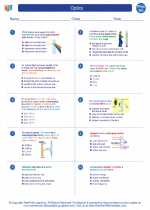Newton's Laws of Motion
Newton's laws of motion are three physical laws that together laid the foundation for classical mechanics. These laws describe the relationship between the motion of an object and the forces acting on it. They were first presented by Sir Isaac Newton in 1687 in his book "Philosophiæ Naturalis Principia Mathematica" (Mathematical Principles of Natural Philosophy). Understanding these laws is crucial in comprehending the behavior of objects in motion.
Newton's First Law
Newton's first law of motion, also known as the law of inertia, states that an object at rest will stay at rest, and an object in motion will stay in motion at a constant velocity unless acted upon by a net external force. In other words, an object will not change its state of motion unless a force is applied to it.
Newton's Second Law
Newton's second law of motion describes the relationship between the force acting on an object, its mass, and its acceleration. Mathematically, this can be expressed as F = ma, where F is the net force acting on the object, m is the object's mass, and a is its acceleration. This law shows that the acceleration of an object is directly proportional to the net force acting on it and inversely proportional to its mass.
Newton's Third Law
Newton's third law of motion states that for every action, there is an equal and opposite reaction. This means that when one object exerts a force on a second object, the second object exerts an equal force in the opposite direction on the first object. Essentially, forces always occur in pairs.
Study Guide
- What is Newton's first law of motion also known as?
- What is the mathematical expression of Newton's second law of motion?
- Give an example of Newton's third law of motion in everyday life.
- Explain how Newton's laws of motion are applied in the context of a car accelerating.
- How are Newton's laws of motion related to everyday experiences?



